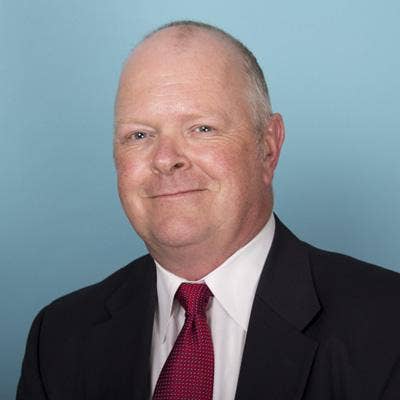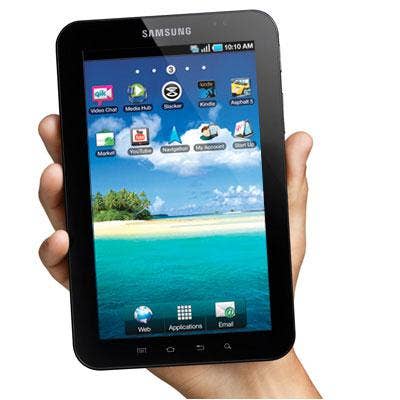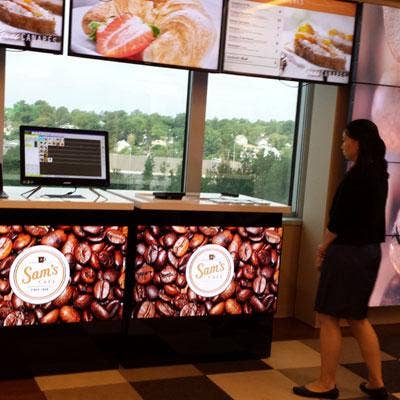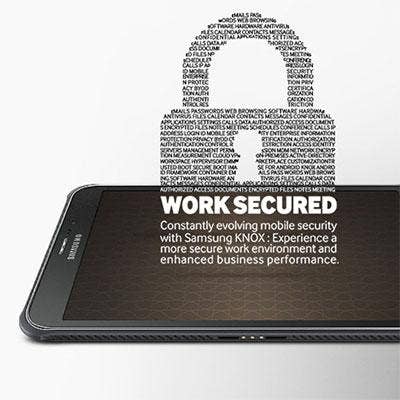XChange 2015: Samsung Channel Director Cheers New Channel Initiatives, Vertical Focus

Samsung's Enterprise Push Is On Track
Samsung executives are on track to their goal of growing the company's B2B sales from 15 percent of the company's global revenue to 40 percent, and are looking to the channel to target niche markets, in particular, with vertical-specific packages for the education and retail space.
Samsung Channel Chief Richard Hutton, who spoke at XChange 2015, hosted by CRN's publisher The Channel Company, said the South Korean company's channel partners are essential in driving that commercial delivery.
Hutton, who has spent the last decade working with Samsung and developing its partner ecosystem, sat down with CRN to outline his visions for channel partners in terms of marketing, vertical markets and enterprise-targeted products.

What are some of Samsung's biggest commercial products that partners can build solutions around?
Mobility as a whole category is huge ... We live off tablets and laptops these days. Digital signage also maintains a big part of what we do. That market is growing very nicely.
I'd also mention branded memory. We've done really well with that product set, it has been well-accepted by the channel, and actually really introduced us to a new set of channel partners. We weren't doing that much with system integration channel and, thankfully, the quality of our product and the campaigns we've done around the memory space.

In Samsung's demo room there were some interesting demos of digital displays. Can you talk about the opportunities of digital displays for partners?
Digital signage is such a pervasive technology. Think about any part of your life, like work, shopping and entertainment -- there are so many uses for signage nowadays. We're seeing that get bigger and bigger.
What we focused on during the last few years was building intelligence into those displays, so we launched our smart signage platform, building a chipset into the device. A lot of partners who are managed service providers are starting to manage digital signage since it is part of business networks and requires monthly management, so the smart guys have started adding that to their managed services portfolios.

Overall, what kind of investment and resources are you putting on Samsung's enterprise segment?
It is definitely continuing what we already started. If you go back five years, we put a lot of investment not just in tools, resources and channel partners, but really on the street to make sure we're setting the standards with enterprise accounts.
In the end-client space we have teams of salespeople that are organized by territory and vertical too. So if you have a retailer in Columbus, Ohio, we'll bring in the guys responsible for Ohio Valley on the retail space and bring that expertise to bear.

Talk about Samsung's vertical focus, which you discussed in your XChange 2015 keynote. What markets are you focused on in particular?
We've been going to market with a vertical focus for a couple of years now. Education is the biggest vertical, and not far behind is health care and finance. And then the retail space has been huge for us.
The technology needs are slightly different for health care, education, transportation and market retail, so we found where we have solutions that fit, we brought in a group of subject matter experts who know different vertical markets.
The team that supports the financial market worked for Goldman Sachs and other banks, to really help us understand the market and help us figure out where our products fit, and also start nurturing relationships with third-party companies that round out those offerings.

Can you talk about Samsung's focus on education with its 'Classroom-in-a-Box' package for the channel?
We've been working with those end clients that go through the channel, but we want to put channel-ready solutions together to make it easier for the partners and really help differentiate them. There's this issue of the news of Common Core, and this one-to-one learning initiative where schools and students and faculty are using technology to make the classroom more interesting, keep students engaged, and use video and animation to pull in content and make the classroom experience more dynamic.
The districts and school superintendents are looking at this issue and it's a little daunting -- they're worried about deploying it and cost issues. We put Classroom in a Box together to help clients who are thinking about this. It’s a really easy solution to deploy in one classroom, run that for a year, and measure how it's going.

What other services do these Classroom-in-a-Box products contain?
We have a great relationship with some curriculum companies like McGraw-Hill, so we worked with them on planning a key curriculum. We also got feedback that staff needs to learn the potential of technology and how to deliver that dynamic learning environment.
So we've got the Samsung devices, the curriculum, but also professional development, and I think that's the secret sauce. We're not just giving away a box; we'll make sure clients know how to use it, have our training, and it's a very cost-effective way for the school to start down this path.

What about your retail solutions for the channel?
Retail solutions are also a great opportunity for us. Our entryway prior to our mobility portfolio is really digital signage. Retail is starting to figure out that it is all about the customer experience. You can do a lot with displays. Now with mobility coming into play, there's that interaction between online shopping and shopping in the stores, and it's all coming together.
We put together some very simple solutions primarily focused on point of sale, but it is driven from the fact that stores are using Android devices to show products for sale on the device that may not be in the store. We put together three bundles around point of sale leveraging our tablets.

Are there any platforms you are hoping to push in the future for partners?
One of the reasons we're at XChange is the issue of mobility security. We have a security platform called Samsung KNOX that comes on all of our phones and tablets. We've recruited solution providers to sell that product, and we have a team developing apps and security widgets built on our APIs that we manage in our headquarters, so that's a really fast-growing area. There's still a little concern around the Android platform and security in the workspace, so we want to bring that in the market and help answer any customer questions, and it's a channel play.
There are absolutely more partners embracing it. Our go-to market has a good ecosystem of mobile device management partners, so we're definitely excited about that too.

You mentioned you were placing an emphasis on marketing for partners as well. Talk a little bit about that.
We've been doing a good job of marketing to our partners. One of the things that we looked at last year was what programs we spent our money on, like training and awareness efforts. We wanted to focus on marketing through our partners, so we launched a set of syndication tools in May of this year. The initial pickup was very encouraging as far as the number of partners starting to leverage it. Now I have a better view of sending content out and seeing who is looking and downloading it.
That’s exciting because there is a next level to this. One thing we've talked about at XChange is growth and the importance of solution providers having a growth strategy, how many clients they need and how to get the value proposition out there. So marketing is a very logical next step beyond that.

Is there any other channel-related news partners should know about?
One of the things I talked about in our keynote [at XChange] was a new group of technical account managers that are solely focused on the channel.
We launched that this year, a team of folks, they're not assigned to particular accounts, but work with partners everyday. We're hand in glove with this technical account team.